10 of the Best London Shopfronts
By Emma J Page
3 years ago
From artsy coffee houses to Victorian facades
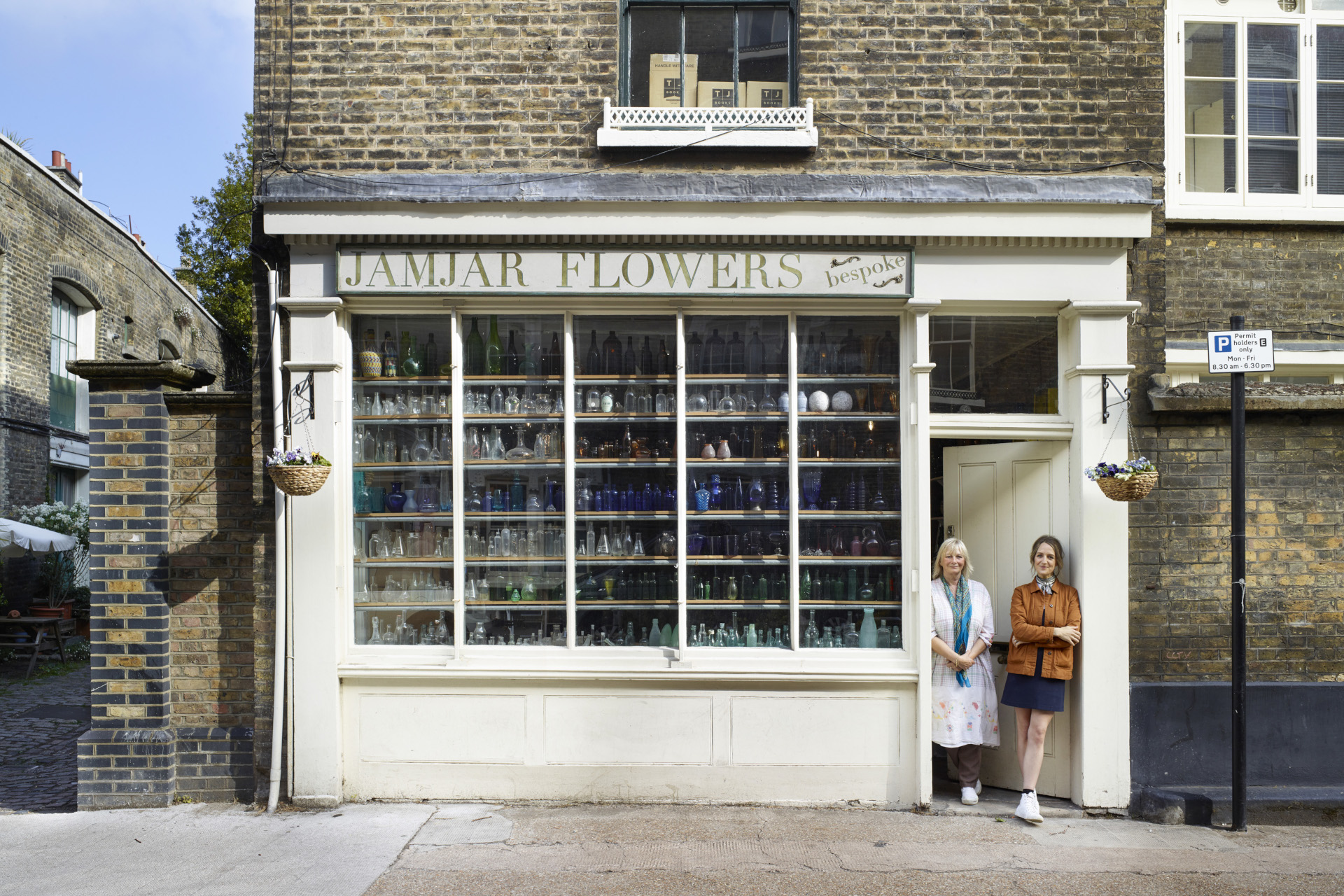
From little-known gems to centuries-old premises, the capital’s store fronts offer a compelling insight into the city’s rich character. Emma J Page rounds up a few of her favourites.
The Best Food & Drink Pop-Ups in London
10 of the Best London Shopfronts
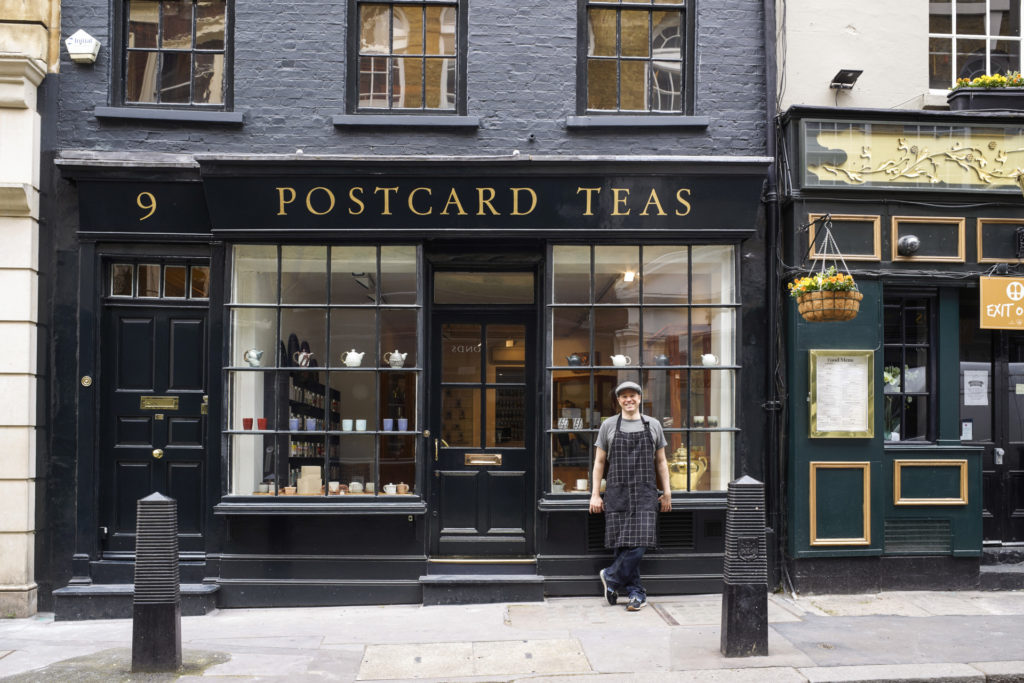
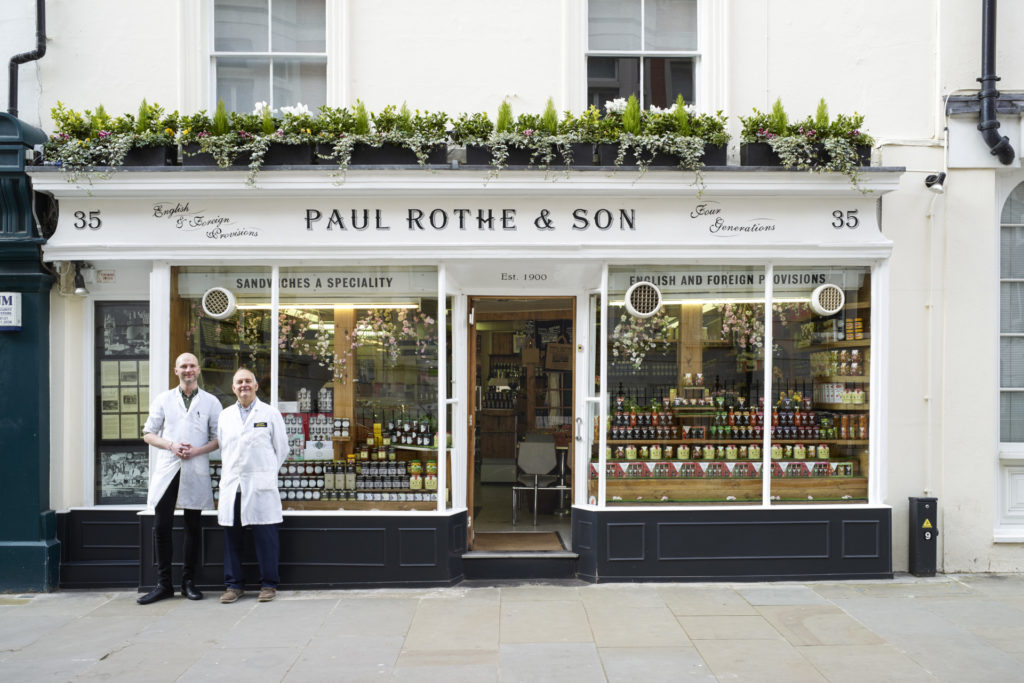
PAUL ROTHE & SON
Named for its German owner, a cigar salesman who came to London in 1898 looking to improve his fortunes, the deli began life as a general grocery. Rothe took one half of the 18th-century premises, which had originally housed a chandler and a cheesemonger. By 1914, he had bought both shops, and the double-fronted space he created hasn’t changed much since then. Capacious windows still house a large assortment of jams, marmalades, honeys, chutneys, pickles and exotic condiments. Inside, original 1950s fold-down chairs and Formica tables offer delightfully retro seating.
35 Marylebone Lane, W1
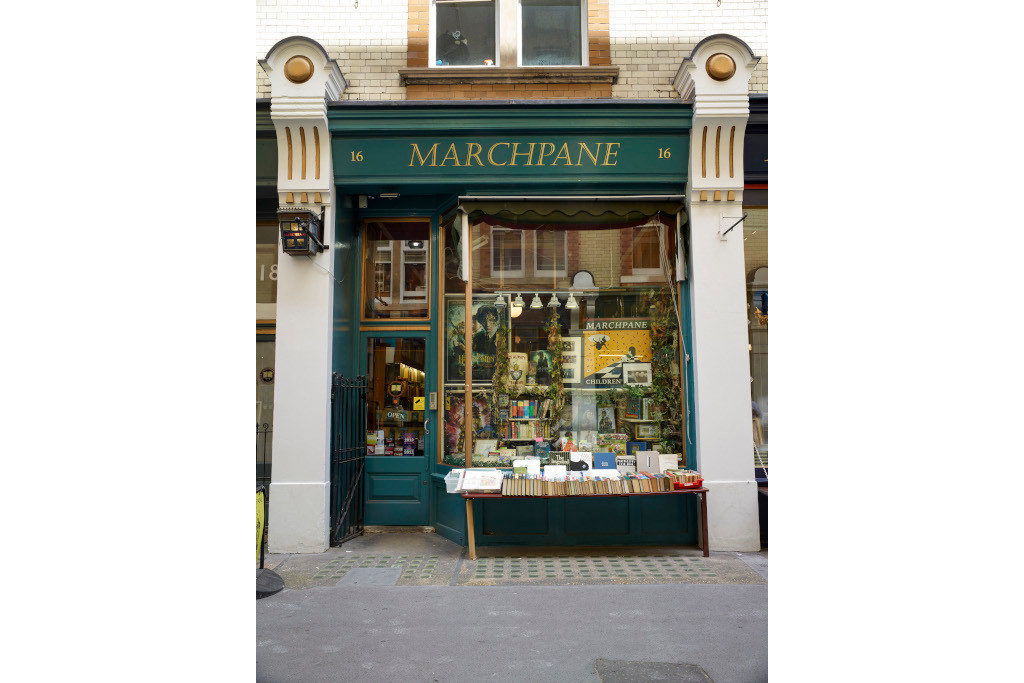
MARCHPANE
Fittingly, there’s something of the fantastical about this children’s book store, whose exterior is painted in a playful combination of moss green and banana yellow. Cecil Court, the Dickensian passageway where the store stands, is said to have been the inspiration for Harry Potter’s Diagon Alley and the street still retains its original gas lamps. In the window, first editions of Roald Dahl’s books jostle with signed prints framed by fairy lights. Look closely at the book-piled trestle table outside and you’ll see that one of its legs has been replaced by a cardboard tube, after a nocturnal passer-by ran off with the original. Quintessentially British and charmingly quirky.
16 Cecil Court, Charing Cross Road, WC2. marchpanebooks.com
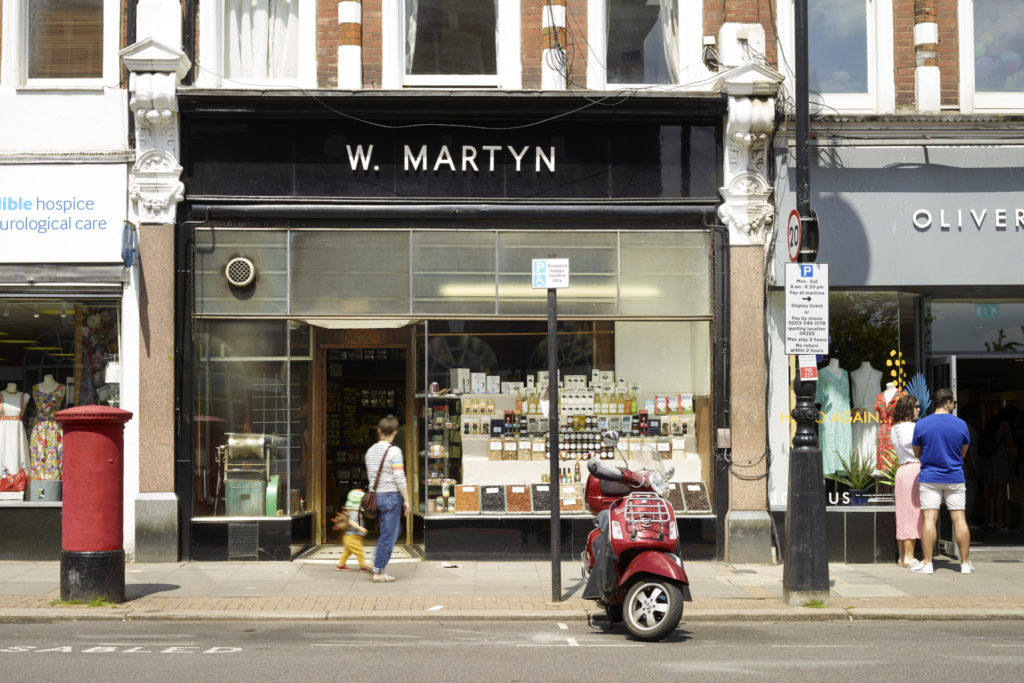
W MARTYN
Little has changed at this listed Victorian grocery since William Martyn first set up shop here in 1897. Elegant interiors comprising matchboard panelling, mahogany shelving and numbered storage caddies are all still in place today. Produce-filled windows, a Vitrolite fascia and a mosaic-floored porch draw in passers-by and regulars. William, great-grandson of the store’s founder, oversees the current offering which includes tea, hand-roasted coffee, dried fruit and nuts, chutneys, preserves, chocolate, cereals, jams and marmalades. It’s a selection that has necessarily evolved over time to avoid the jaws of supermarket chains, but aesthetically speaking, little else has altered.
135 Muswell Hill Broadway, N10. wmartyn.co.uk
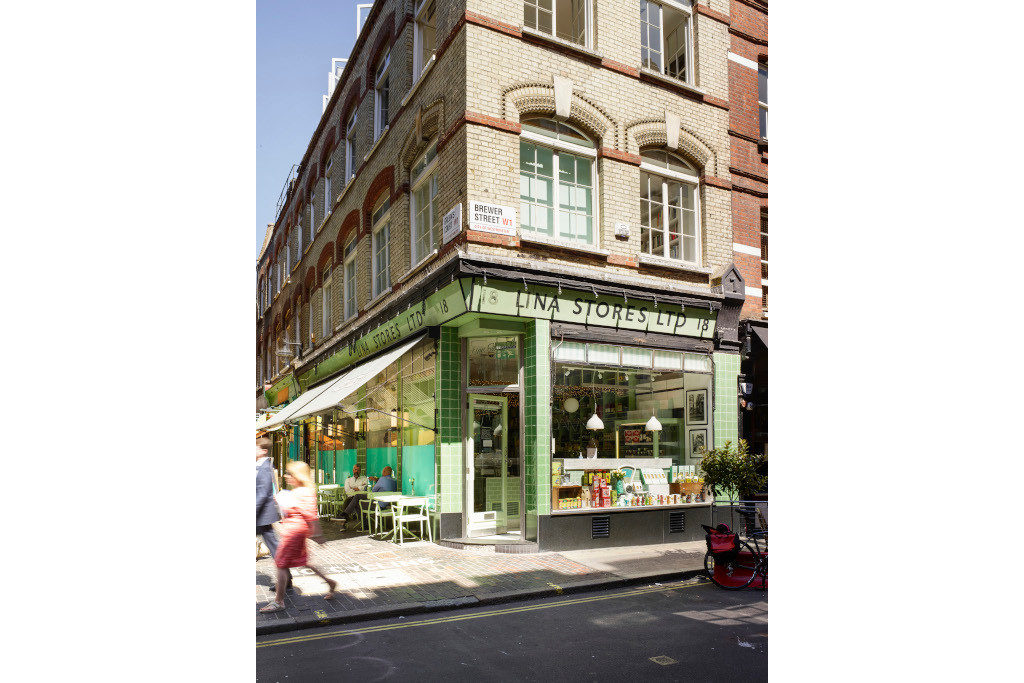
LINA STORES
Known for its black and mint façade, the name of this Italian deli has been whispered among gourmands for more than 75 years. Yet few realise that it’s reportedly the result of a typo. Genova-born Lina (whose surname appears to have been lost in the passage of time) set up shop here in 1944 and when she commissioned the original signage, she intended it to read ‘Lina’s Store’. However, an unfortunately placed ‘S’ resulted in a subtle change of meaning. Retro, green ceramic tilling, a long glass counter and produce-laden shelves have been a fixture since the early days. Key to this shop’s appeal is its marriage of British and Italian style – fresh pastas, sauces and antipasti are dished out from its deli counter in what amounts to a quintessentially British corner store setting.
18 Brewer Street, W1. linastores.co.uk
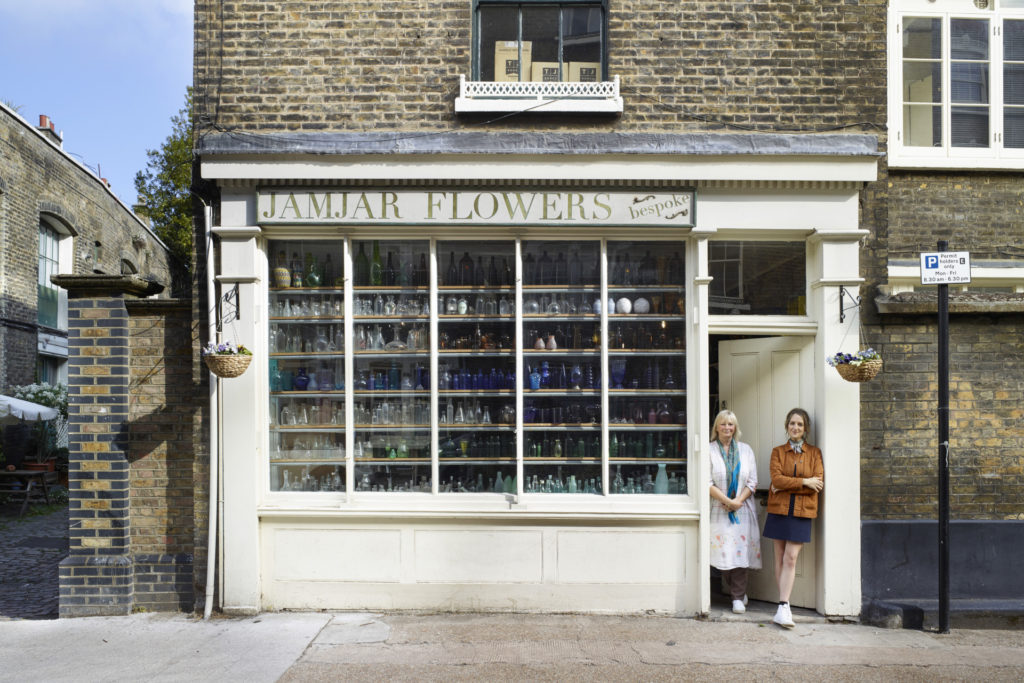
JAMJAR FLOWERS
Tucked away in a residential Walworth side street, this flower studio is part of a collective of workshops housed within a cobbled yard built in the 1870s. Early precursors of the modern live-work concept, they are now occupied largely by creatives, including artists, makers and architects. JamJar’s window is packed full of vintage glassware, while inside, a reclaimed table, an old draper’s unit and a butler’s sink are both practical and pleasing. Though the premises are strictly studio rather than shop, floral designer Melissa Richardson commissioned model-maker Fran Lloyd to make a vintage-looking banner for the Victorian fascia, creating the sense that time has stood still in this hidden side street.
7a Peacock Yard, Iliffe Street, SE17. jamjarflowers.co.uk
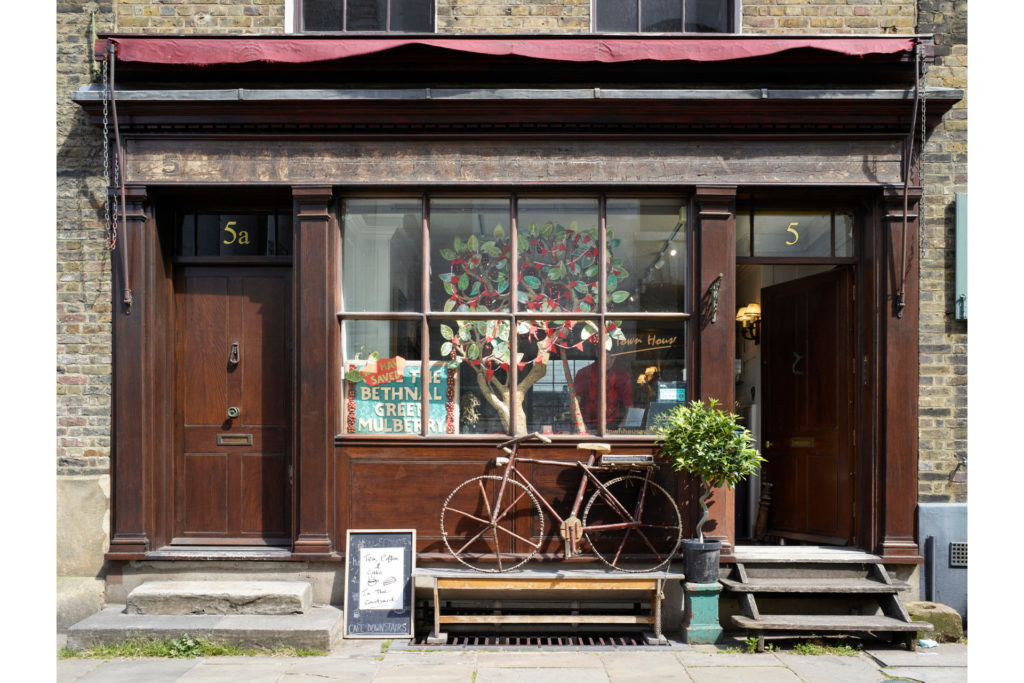
TOWNHOUSE
When antiques dealer Fiona Atkins bought this Georgian townhouse, the roof was propped up, interior panelling boarded over and its newer, 20th-century wooden frontage was disintegrating. She commissioned a fresh ground-floor façade for the 300-year-old building, based on a drawing by William Pain, whose shopfront designs she had found published in a 1799 book. Once home to the area’s Huguenot silk weavers, the shop now offers a seductive mix of repurposed antiques, modern ceramics and 20th-century British art, with a gallery space at the rear, in what was formerly a 19th-century doctor’s surgery.
5 Fournier Street, E1. townhousespitalfields.com
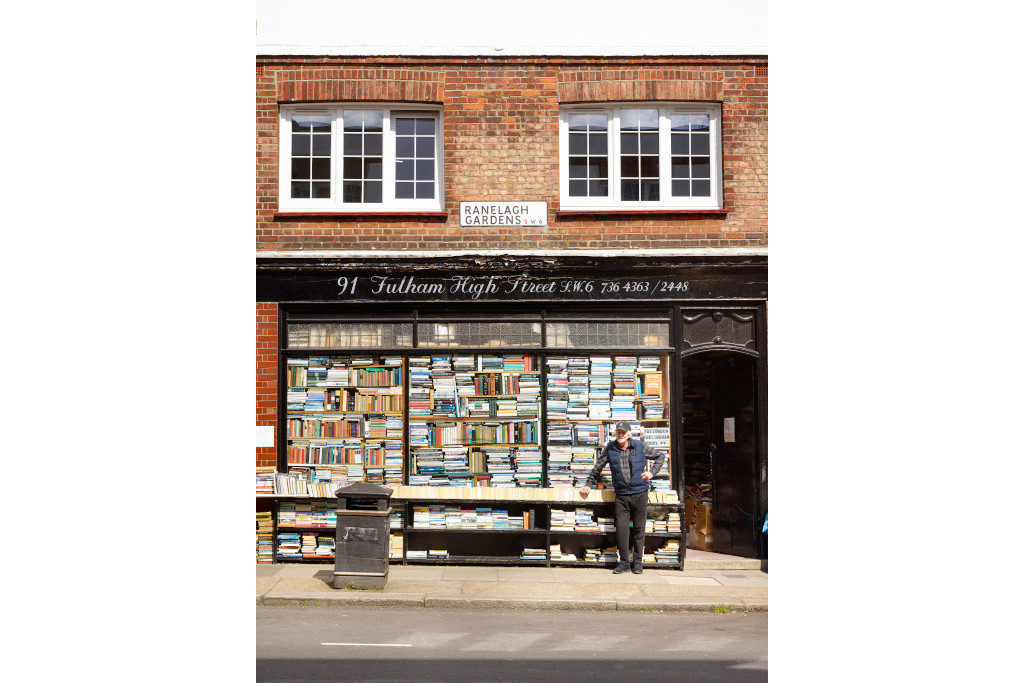
HURLINGHAM BOOKS
Though not a traditionally ‘handsome’ store, this Fulham shopfront and former dairy cannot fail to appeal to book worms and lovers of delightfully haphazard interiors. Come rain or shine, a trestle table outside heaves with well-thumbed paperbacks and its windows are densely piled with colourful book spines. The eagle-eyed will spot a perfectly round hole in the shop’s upper left Victorian leadlight window – the result of an ill-judged snowball aim, more than a decade ago. No matter – it is patched up with books, much like the rest of this endearingly rickety corner shop.
Ranelagh Gardens, 91 Fulham High Street, SW6. hurlinghambooks.com
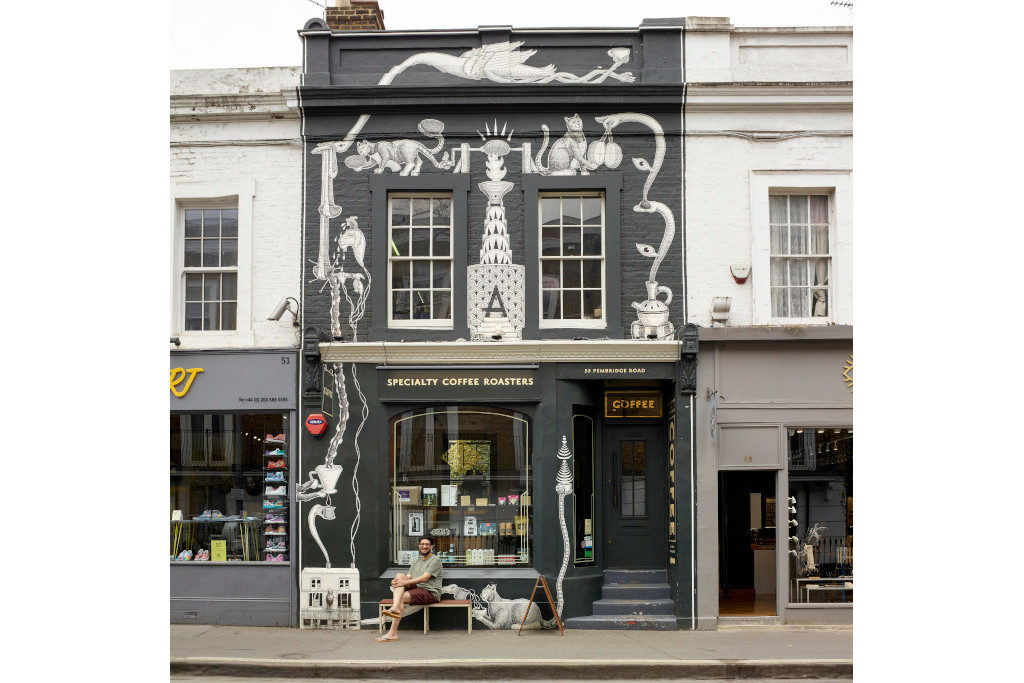
AMORET
Coffee and art collide at this west London townhouse, whose façade is covered in a symbolic mural depicting Kaldi the Ethiopian goat-herder, who, legend has it, discovered the stimulating effects of the coffee cherry. The artwork, with its informal, freehand feel, is a collaboration between owner Sadiq Merchant and barista-turned-artist Tim Shaw. Once a family home, the store – whose name derives from Catalan and Italian slang for ‘little love’ – retains a domestic feel, with wide Georgian windows, a well-trodden staircase and graceful high ceilings.
53 Pembridge Road, W11. amoret.co.uk
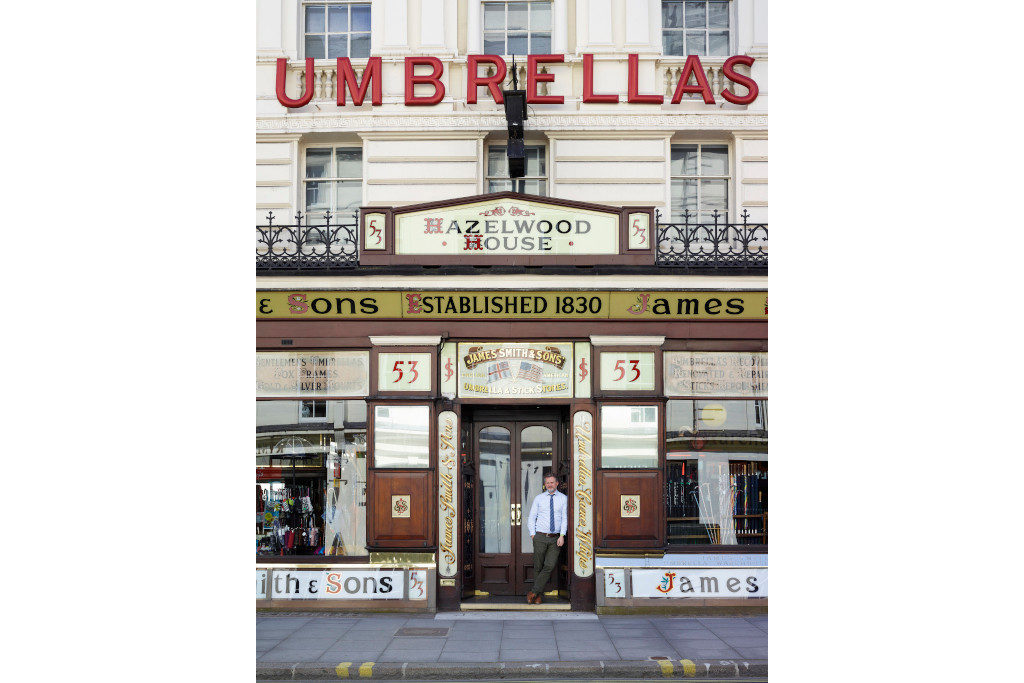
JAMES SMITH & SONS
Filled with all manner of umbrellas, this Grade-II listed building has barely changed since it moved to New Oxford Street in 1857 and remains one of the city’s most complete original Victorian shopfronts. Intricate stucco work, wrought-iron balconies, audaciously large signage and mahogany-framed plate-glass windows are all still perfectly intact, while glasswork is enamelled, in keeping with the ‘more is more’ decorative approach of the era. Inside, original late-Victorian wood counters are a rare survival in the city. The perfect pit stop during one of London’s ill-timed downpours.
Hazelwood House, 53 New Oxford Street, WC1. james-smith.co.uk

POSTCARD TEAS
This elegant Georgian store has been in the business of provisions since at least the early 1800s. These days, it offers a selection of small-estate teas, each labelled with its maker’s name and origin. In the timber-framed square bay window, a large brass teapot, formerly the shop sign of a 19th-century Dutch tea merchant, acts as an unofficial logo. Signwriter Philip Surey, who has produced designs for HMS Victory, Tate Britain and Westminster Abbey, created the exterior’s fine gilt lettering, while inside, white walls, wide plank floors and a large American oak table encourage informal browsing.
9 Dering Street, W1. postcardteas.com
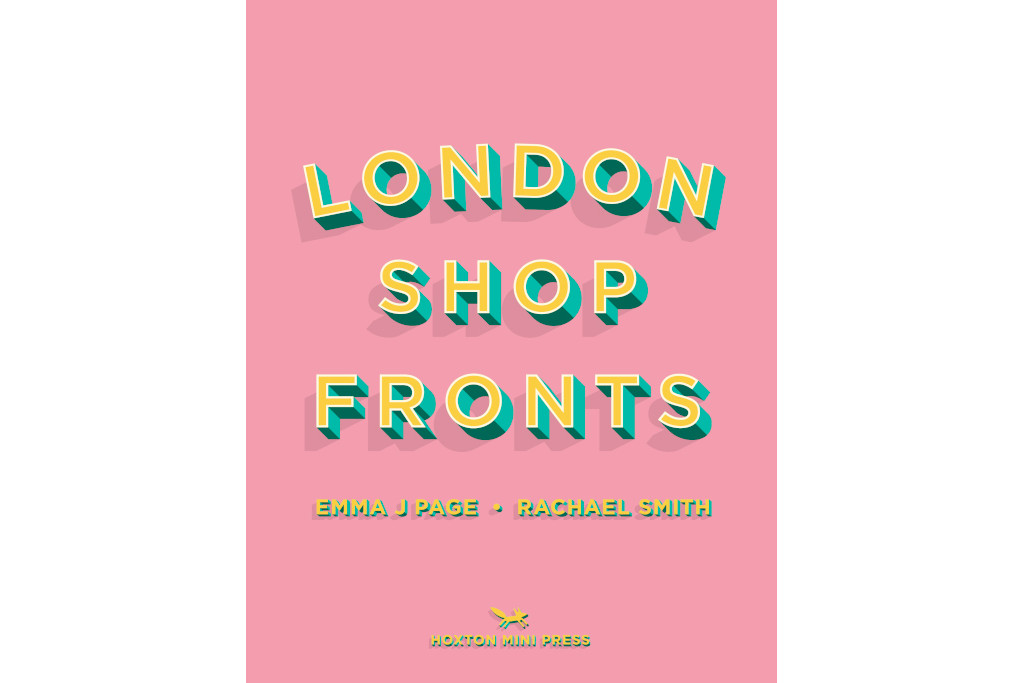
London Shopfronts by Emma J Page and Rachael Smith (Hoxton Mini Press), £22.95, hoxtonminipress.com
Featured image: JAMJAR FLOWERS
The Best Christmas Window Displays in London
You might also like...

Culture
‘I’d Love To Be An F1 Driver’: Q&A With F1 Academy Rising Star Alisha PalmowskiBy Rebecca Cox


